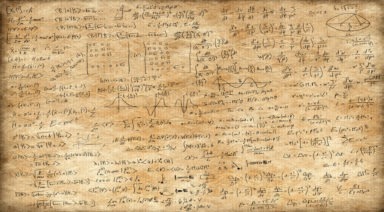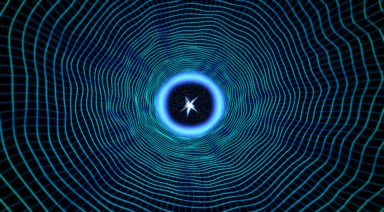Astronomers Find Anomaly That Defies Understanding of the Universe

A new discovery in space may make us rethink everything we know about the universe.
Scientists at the University of Central Lancashire in the UK, have discovered a giant arc—an extremely large crescent structure of galaxies in distant space. Ph.D. candidate Alexia Lopez, who made the discovery, said, “It’s so big that it’s hard to explain with our current theories.”
The Cosmological Principle states that the universe is homogenous and isotropic, meaning the universe looks the same in all orientations. So how does the giant arc challenge our way of thinking about the universe?
Astronomer and Gaia News contributor Marc D’Antonio said, “this giant arc is really interesting because we’ve seen large-scale structures before in the universe, but nothing of this size. The proportion of this is something that’s actually outside our understanding of current cosmology.”
“What’s interesting about that is, this particular arc, it’s about 9.2 billion light-years away from us, and it’s about 3.4 billion light-years in size. Now keep in mind, that’s a good fraction of the size of the known universe, which is somewhere in the order of 91 or 92 billion light-years in diameter.”
Watch more:
Have Recent Solar Flares Opened Energy Portals?

On October 28, 2021, a massive solar flare unleashed a blast of charged particles in Earth’s direction.
This geomagnetic storm resulted in a display of stunning auroras thanks to our planet’s protective magnetosphere. But did this powerful solar event also open temporary energetic portals?
On Oct. 28, a Category 3 geomagnetic storm erupted from the Sun’s surface reaching earth a few days later. This classification comes from the national oceanic and atmospheric administration’s space weather scale.
A level 3 geomagnetic storm is considered strong and can result in minor disturbances to high-frequency radio signals and low-frequency radio navigation. It also leads to auroras visible at much lower latitudes than usual, including as far south as Oregon and even Illinois.
Matias De Stefano, host of the Gaia series Initiation, happened to be in Oregon during this profound solar event.
These storms from the magnetic field of the Sun affect all the planets around, and of course when they hit Earth, they change the pattern of the magnetic field of the planet,” De Stefano said. “So, that opens portals all the time because it moves the energy of the planet and makes the geometrical patterns have to restore and readapt to something new.”
In 2012, NASA published a paper titled, “Hidden Portals in Earth’s Magnetic Field,” in which it explained that a scientist had discovered what the space agency refers to as x-points, or portals where the magnetic field of the Earth connects to the Sun.
According to Jack Scudder, the lead physicist who discovered these portals, this phenomenon creates an uninterrupted connection to the Sun‘s atmosphere 93 million miles away. But what effect does this have for us here on Earth?


































